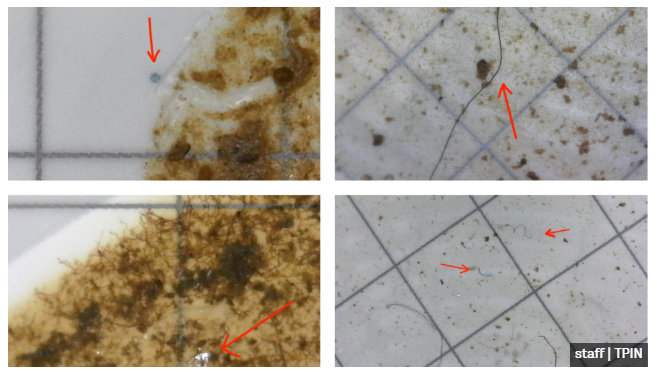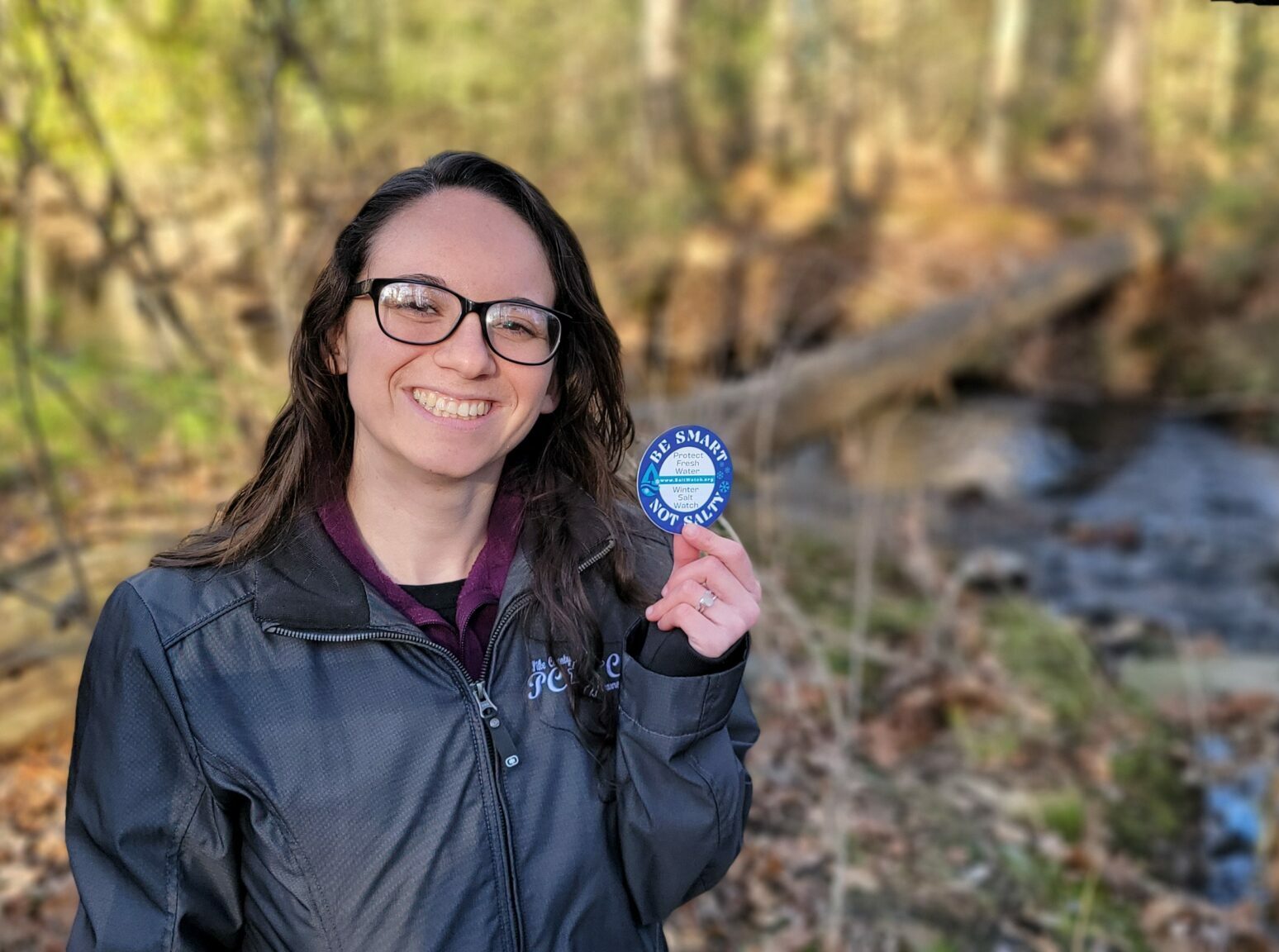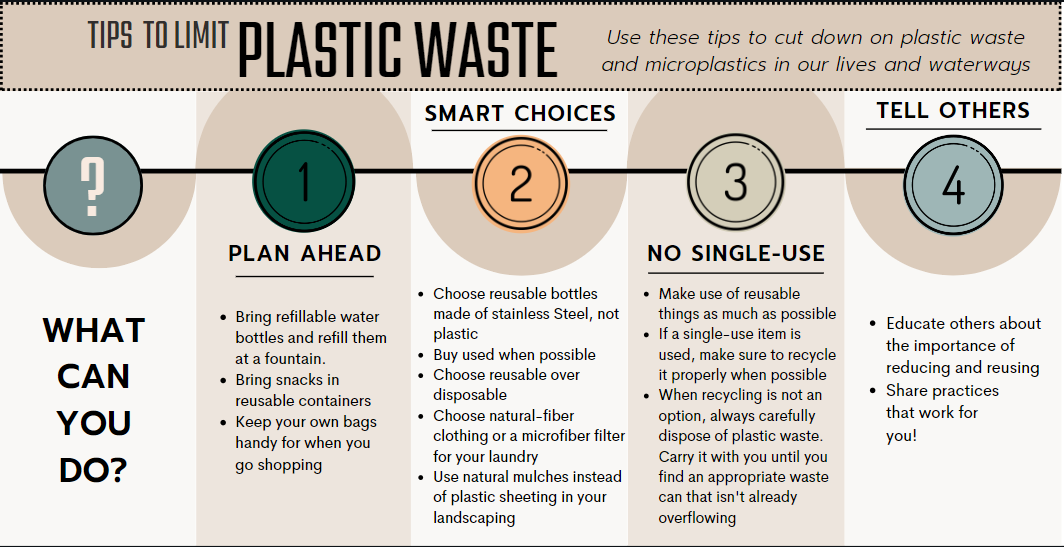News

Microplastic Testing Report

By: Rachael Marques Watershed Specialist PCCD
Americans use 2.5 million plastic bottles every hour, according to Pennsylvania State Extension. It’s no surprise that we have a plastic use problem in the United States. We all accumulate plastic waste everywhere we go, including our homes, workplaces, stores, etc. But once we dispose of that plastic, where does it go? If you don’t recycle your plastic, it can end up in a landfill, on the side of the road as litter, or anywhere else in our environment. Plastic does not biodegrade. It only breaks down into smaller and smaller pieces, which can stay in the environment for a very long time. These tiny plastic pieces can go almost anywhere and get into almost everything.
Microplastics are very small pieces of plastic (5mm or less) that may or may not be seen with the naked eye. They are usually formed as larger plastics, such as packaging and bottles or synthetic fabrics like fleece, break down. There is an increasing concern about microplastics and their presence. The effects of microplastic consumption are not yet fully understood however, they are being found in our water, air, foods, and even our bodies.
This year, Pike County Conservation District (PCCD) participated in a microplastics study with the PennEnvironment Research and Policy Center. Two stream sites were sampled in Pike County, one on Vandermark Creek by its confluence with the Delaware River, and one in an unnamed tributary to Walker Lake Creek in a wooded, but commonly traveled area. After sending the samples to be analyzed, the result came back: both samples we collected revealed the presence of microplastics! The group at PennEnvironment analyzed samples from 50 sites across Pennsylvania and every waterway tested had some type of microplastics. Even streams in areas that are more secluded are showing the presence of microplastics. Though all the sites tested are designated as streams with excellent water quality, microplastics still found a way into the water.
Here in the US, we have a plastic use and plastic waste problem. Luckily there are many things we can do to change that. One common way that microplastics end up in water sources is through the breakdown of litter, so join in on community trash cleanups when available or start your own! When in doubt, remember the adage: reduce, reuse, recycle. It is still the perfect guideline! See the graphic below for some suggestions to limit the amount of plastic waste you create. You can be part of the microplastics solution.

Information from Penn State Extension
Full Report on PA Microplastics
Interactive map of the microplastic sites in PA
10 Tips to Reduce Your Plastic Use
The feature image at the top of the page: microplastics in Pennsylvania Creeks, courtesy of Penn Environment.
